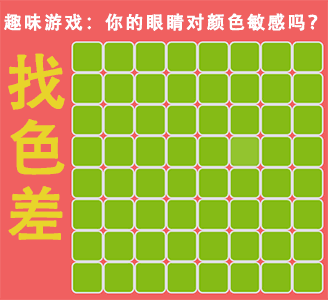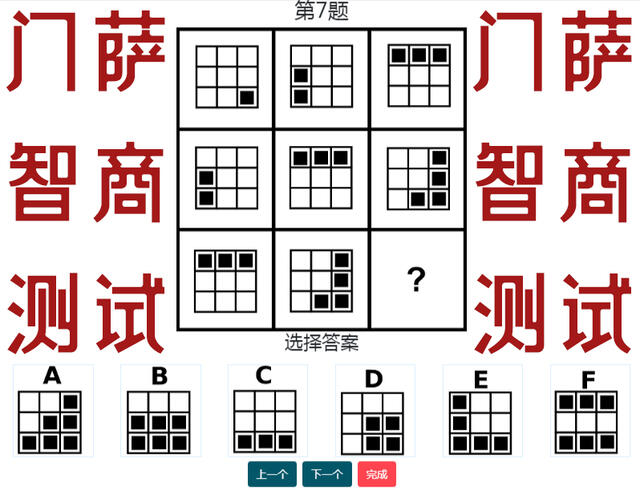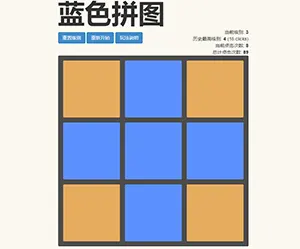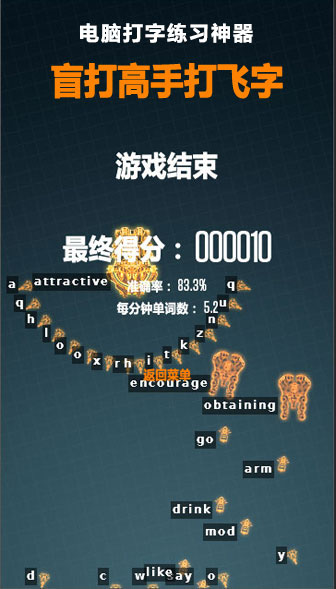Map (映射) 实现
Map 的数据结构
『Map 是一种抽象的数据结构,它包含着类似于(键,值)的有序对。』这是维基百科上的解释。
具体实现一般用 HashTable 或者 Search Tree。很多编程语言或者存储软件都内置了 map 这个基本数据类型。
Hash Table 原理
哈希表提供了 O(1) 的读写性能和键值之间的映射关系。但实现一个哈希表还需要解决两个关键问题:哈希函数和冲突解决。
哈希函数
实现哈希表的关键点在于哈希函数的选择,哈希函数很大程度上决定哈希表的读写性能。在理想情况下,通过分布均匀哈希函数对一个键的访问,能够在 O(1) 的时间内被定位。Go 语言里如果 CPU 支持 aes 算法就用 aes 否则用 memhash 。Redis 里哈希函数用的 DJB 。Java 对象内置了 hashCode 方法。
冲突解决
开放地址法(open addressing)
其中,hash(key) 为哈希函数, m 为 哈希表长, 为增量序列,i 为已发生冲突的次数。增量序列有下列取法:
称为线性探测(Linear Probing);即 , 或者为其他线性函数。相当于逐个探测,直到找到索引不为空的单元,将地址放入。
称为平方探测(Quadratic Probing)。
, 此时 , 称为双重哈希(Double hashing);
拉链法
拉链法常见的实现是用双向链表数组。相同 index 的 key 会存在这个 index 对应的双向链表中。
写入和读取一般都要通过计算哈希 h = hash(key)、定位桶 index = h/m、遍历链表三个步骤。
装载因子
load fator = , n 哈希表实际元素个数,k 桶的数量。
无论开发地址法还是拉链法,装载因子越大,哈希的读写性能越差。一般拉链放装载因子不会超过 1。
动态扩容
当负载因子超过哈希表设定阀值时,一般就会出发哈希表动态扩容,这个过程常叫做 rehashing。
触发 rehash 的过程在实现时会有多个因素。Rehashing 一般包含两个步骤:增加哈希表的大小,重新映射现有的元素到新的桶里。
为了避免内存浪费,工程实践上 rehash 并不一定会申请更大的内存空间。但发生频繁删除大部分元素时,大部分实现里哈希表 buckets 数量不会自动缩容,这部分内存占用通常相比 key、value 的占用要少的多。
在哈希表扩容完判断和执行之后后,就会进行元素的迁移。可以一次性 STW 进行全量或者非全量迁移。有些哈希表的实现比如实时系统、基于磁盘的哈希表一般都会选择非全量迁移。非全量常见的有渐进式、 单调键、线性哈希、分布式哈希表。单调键方式就是对 key 按照 range 进行分片,cocurrentHashMap 也是类似的思路。 这里我们重点讨论渐进式。
渐进式 rehash
-
申请一个新的哈希表,保持旧的表不变。
-
在每个查找或者删除操作,检查新旧两张表。
-
插入操作放放在新表里。
-
每次插入操作都迁移 r 个旧表元素到新表
-
当旧表所有元素都迁移完成时,释放旧表。
Go map 实现
数据结构
// A header for a Go map.
type hmap struct {
// Note: the format of the hmap is also encoded in cmd/compile/internal/reflectdata/reflect.go.
// Make sure this stays in sync with the compiler's definition.
count int // # live cells == size of map. Must be first (used by len() builtin)
flags uint8
B uint8 // log_2 of # of buckets (can hold up to loadFactor * 2^B items)
noverflow uint16 // approximate number of overflow buckets; see incrnoverflow for details
hash0 uint32 // hash seed
buckets unsafe.Pointer // array of 2^B Buckets. may be nil if count==0.
oldbuckets unsafe.Pointer // previous bucket array of half the size, non-nil only when growing
nevacuate uintptr // progress counter for evacuation (buckets less than this have been evacuated)
extra *mapextra // optional fields
}
// mapextra holds fields that are not present on all maps.
type mapextra struct {
// If both key and elem do not contain pointers and are inline, then we mark bucket
// type as containing no pointers. This avoids scanning such maps.
// However, bmap.overflow is a pointer. In order to keep overflow buckets
// alive, we store pointers to all overflow buckets in hmap.extra.overflow and hmap.extra.oldoverflow.
// overflow and oldoverflow are only used if key and elem do not contain pointers.
// overflow contains overflow buckets for hmap.buckets.
// oldoverflow contains overflow buckets for hmap.oldbuckets.
// The indirection allows to store a pointer to the slice in hiter.
overflow *[]*bmap
oldoverflow *[]*bmap
// nextOverflow holds a pointer to a free overflow bucket.
nextOverflow *bmap
}
-
count 当前哈希表中元素数量;
-
B buckets 大小的对数,即(len(buckets));
-
buckets 指向保存 bucket 的数组,一个 bucket 是个 bmap 结构体,保存了 bucketCnt(8)个元素;
-
oldbuckets 是哈希在扩容时候保存之前 buckets 的字段,它的大小是当前 buckets 的一半。
// A bucket for a Go map.
type bmap struct {
// tophash generally contains the top byte of the hash value
// for each key in this bucket. If tophash[0] < minTopHash,
// tophash[0] is a bucket evacuation state instead.
tophash [bucketCnt]uint8
// Followed by bucketCnt keys and then bucketCnt elems.
// NOTE: packing all the keys together and then all the elems together makes the
// code a bit more complicated than alternating key/elem/key/elem/... but it allows
// us to eliminate padding which would be needed for, e.g., map[int64]int8.
// Followed by an overflow pointer.
}
go 1.17.1 之后 bmap 其它字段可以更具编译期间的 cmd/compile/internal/refleactdata/reflect.go 里的 MapBucketType 重构出它的结构:
type bmap struct {
topbits [8]uint8
keys [8]uint8
elems [8]elemtype
overflow uintptr
}
当一个 bucket(bmap)中的元素溢出时,会创建新的 bmap ,用 overflow 指针关联,形成链表。
运行时的类型表示
type maptype struct {
typ _type
key *_type
elem *_type
bucket *_type // internal type representing a hash bucket
// function for hashing keys (ptr to key, seed) -> hash
hasher func(unsafe.Pointer, uintptr) uintptr
keysize uint8 // size of key slot
elemsize uint8 // size of elem slot
bucketsize uint16 // size of bucket
flags uint32 //
}
// flags 是在 in ../cmd/compile/internal/reflectdata/reflect.go:writeType 函数里按位或填充的。
访问
底 B 位表示 index 用来确定在 hmap.buckets 的哪个 bucktet 中,高 8 位用来定位在 bmap 桶内的位置。
在 Go 语言中,hash[key] 这类操作会在编译的类型检测期间转换成哈希的 OINDEXMAP 操作,中间代码生成阶段,OINDEXMAP 会被转换为如下代码:
v := hash[key] // => v := *mapaccess1(maptype, hash, &key) v, ok := hash[key] // v, ok := *mapaccess2(maptype, hash, &key)
func mapaccess1(t *maptype, h *hmap, key unsafe.Pointer) unsafe.Pointer {
if raceenabled && h != nil {
callerpc := getcallerpc()
pc := funcPC(mapaccess1)
racereadpc(unsafe.Pointer(h), callerpc, pc)
raceReadObjectPC(t.key, key, callerpc, pc)
}
if msanenabled && h != nil {
msanread(key, t.key.size)
}
if h == nil || h.count == 0 {
if t.hashMightPanic() {
t.hasher(key, 0) // see issue 23734
}
return unsafe.Pointer(&zeroVal[0])
}
// Go map 不支持并发读写,如果需要可以用 sync.Map 或者参考 Java 的 coccurrentHashMap
if h.flags&hashWriting != 0 {
throw("concurrent map read and map write")
}
hash := t.hasher(key, uintptr(h.hash0)) // 计算 key 哈希值
m := bucketMask(h.B) // m = 1<<b - 1
// 跟具 hash&m 判断在第几个桶并取出bmap
b := (*bmap)(add(h.buckets, (hash&m)*uintptr(t.bucketsize)))
// 如果还有旧元素没有迁移,并且 key 对应的桶没有迁移则覆盖 b
if c := h.oldbuckets; c != nil {
if !h.sameSizeGrow() {
// There used to be half as many buckets; mask down one more power of two.
m >>= 1
}
oldb := (*bmap)(add(c, (hash&m)*uintptr(t.bucketsize)))
if !evacuated(oldb) {
b = oldb
}
}
top := tophash(hash)
// 外层循环 b 和 b.overflow,内层循环 b.tophash 判断 hash 高 8 位、key 是否匹配
bucketloop:
for ; b != nil; b = b.overflow(t) {
for i := uintptr(0); i < bucketCnt; i++ {
if b.tophash[i] != top {
if b.tophash[i] == emptyRest {
break bucketloop
}
continue
}
k := add(unsafe.Pointer(b), dataOffset+i*uintptr(t.keysize))
if t.indirectkey() {
k = *((*unsafe.Pointer)(k))
}
if t.key.equal(key, k) {
e := add(unsafe.Pointer(b), dataOffset+bucketCnt*uintptr(t.keysize)+i*uintptr(t.elemsize))
if t.indirectelem() {
e = *((*unsafe.Pointer)(e))
}
return e
}
}
}
return unsafe.Pointer(&zeroVal[0])
}
写入或修改
mapassign 函数只返回要赋值的内存地址,并不会
// Like mapaccess, but allocates a slot for the key if it is not present in the map.
func mapassign(t *maptype, h *hmap, key unsafe.Pointer) unsafe.Pointer {
if h == nil {
panic(plainError("assignment to entry in nil map"))
}
if raceenabled {
callerpc := getcallerpc()
pc := funcPC(mapassign)
racewritepc(unsafe.Pointer(h), callerpc, pc)
raceReadObjectPC(t.key, key, callerpc, pc)
}
if msanenabled {
msanread(key, t.key.size)
}
if h.flags&hashWriting != 0 {
throw("concurrent map writes")
}
hash := t.hasher(key, uintptr(h.hash0))
// Set hashWriting after calling t.hasher, since t.hasher may panic,
// in which case we have not actually done a write.
h.flags ^= hashWriting
if h.buckets == nil {
h.buckets = newobject(t.bucket) // newarray(t.bucket, 1)
}
again:
bucket := hash & bucketMask(h.B)
if h.growing() {
growWork(t, h, bucket)
}
b := (*bmap)(add(h.buckets, bucket*uintptr(t.bucketsize)))
top := tophash(hash)
var inserti *uint8 // inserti 目标元素在 buckets 中的索引。
var insertk unsafe.Pointer // insertk 目标键在桶内的地址。
var elem unsafe.Pointer // elem 目标值在桶内的地址。
bucketloop:
for { // 双层循环查找 key
for i := uintptr(0); i < bucketCnt; i++ {
if b.tophash[i] != top {
if isEmpty(b.tophash[i]) && inserti == nil {
inserti = &b.tophash[i]
insertk = add(unsafe.Pointer(b), dataOffset+i*uintptr(t.keysize))
elem = add(unsafe.Pointer(b), dataOffset+bucketCnt*uintptr(t.keysize)+i*uintptr(t.elemsize))
}
if b.tophash[i] == emptyRest {
break bucketloop
}
continue
}
k := add(unsafe.Pointer(b), dataOffset+i*uintptr(t.keysize))
if t.indirectkey() {
k = *((*unsafe.Pointer)(k))
}
if !t.key.equal(key, k) {
continue
}
// already have a mapping for key. Update it.
// 判断 key 的类型是否需要更新。底层是根据 maptype.flags&8!=判断的。
// flags 在上面提到的 writeType 函数里按位或填充的。
if t.needkeyupdate() {
typedmemmove(t.key, k, key)
}
elem = add(unsafe.Pointer(b), dataOffset+bucketCnt*uintptr(t.keysize)+i*uintptr(t.elemsize))
goto done
}
ovf := b.overflow(t)
if ovf == nil {
break
}
b = ovf
}
// Did not find mapping for key. Allocate new cell & add entry.
// If we hit the max load factor or we have too many overflow buckets,
// and we're not already in the middle of growing, start growing.
if !h.growing() && (overLoadFactor(h.count+1, h.B) || tooManyOverflowBuckets(h.noverflow, h.B)) {
hashGrow(t, h)
goto again // Growing the table invalidates everything, so try again
}
if inserti == nil {
// The current bucket and all the overflow buckets connected to it are full, allocate a new one.
newb := h.newoverflow(t, b)
inserti = &newb.tophash[0]
insertk = add(unsafe.Pointer(newb), dataOffset)
elem = add(insertk, bucketCnt*uintptr(t.keysize))
}
// store new key/elem at insert position
if t.indirectkey() {
kmem := newobject(t.key)
*(*unsafe.Pointer)(insertk) = kmem
insertk = kmem
}
if t.indirectelem() {
vmem := newobject(t.elem)
*(*unsafe.Pointer)(elem) = vmem
}
typedmemmove(t.key, insertk, key)
*inserti = top
h.count++
done:
if h.flags&hashWriting == 0 {
throw("concurrent map writes")
}
h.flags &^= hashWriting
if t.indirectelem() {
elem = *((*unsafe.Pointer)(elem))
}
return elem
}
删除
扩容
Redis hashDict 实现
Java hashTable 实现
Search Tree 实现
哈希表应用
数据库索引
缓存
集合 Sets
本文文字及图片出自 InfoQ
你也许感兴趣的:
- 【外评】电脑从哪里获取时间?
- 【外评】为什么 Stack Overflow 正在消失?
- Android 全力押注 Rust,Linux 却在原地踏步?谷歌:用 Rust 重写固件太简单了!
- 【外评】哪些开源项目被广泛使用,但仅由少数人维护?
- 【外评】好的重构与不好的重构
- C 语言老将从中作梗,Rust for Linux 项目内讧升级!核心维护者愤然离职:不受尊重、热情被消耗光
- 【外评】代码审查反模式
- 我受够了维护 AI 生成的代码
- 【外评】Linux 桌面市场份额升至 4.45
- 【外评】作为全栈开发人员如何跟上 AI/ML 的发展?
















你对本文的反应是: